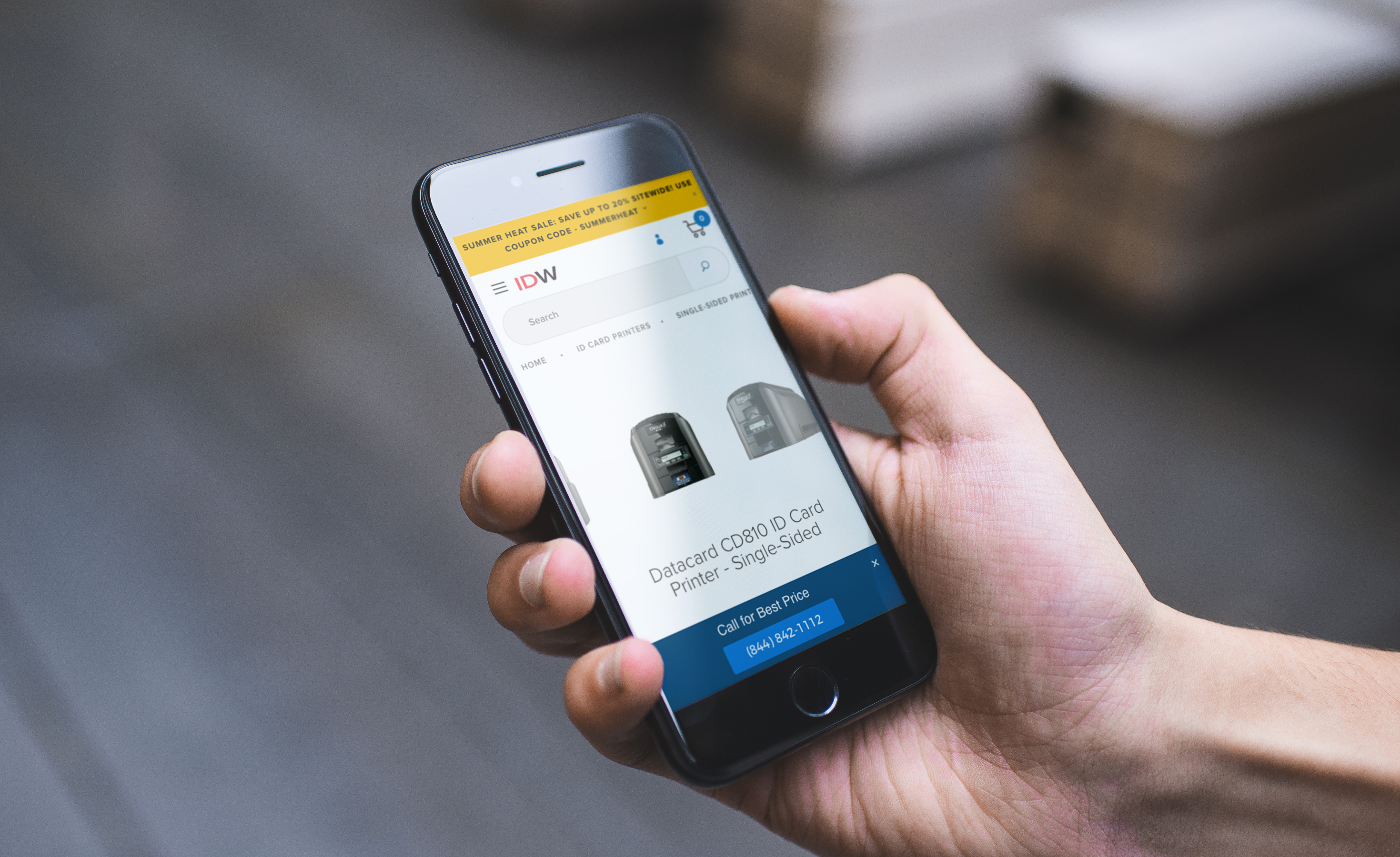
See why top ecommerce brands use Miva’s no-code platform to run
multiple stores, manage massive catalogs, and grow their revenue.
Is your online store ready to serve B2B buyers while they are away from their desks? It needs to be. Whether they’re replenishing stocks on the road or putting together estimates for clients, they want to be able to check product details and pricing – and then push the button on a purchase.
Mobile is definitely on the move. More than a third of U.S. ecommerce sales were made on a mobile device in 2017, according to eMarketer Inc. The research firm expects mobile sales to increase by a third in 2018—reaching more than $200 billion—and estimates that by 2020 mobile sales will top 50%.
But the impact on total retail sales is even larger than that. Although only 2.2% of total U.S. retail sales took place on a smartphone in 2017, according to Forrester Research, the impact on total retail sales is estimated at 35% in 2018. And that number is expected to reach 42% by 2022, according to a story on the Forrester report by Digital Commerce 360.
Why is the smartphone impact so strong? Because both B2B and B2C shoppers are using their smartphones for research and price comparisons while they are away from their desktops and laptops. “Shoppers have integrated smartphones into their product research at every phase of the customer life cycle, from discovery to price checking in-store,” Forrester principal analyst Brendan Miller writes in the newly released “2018 Retail Best Practices: Mobile Web.”
The relatively low sales figures—in comparison to overall impact—can also reflect the impact of many online stores not being fully open for B2B mobile ecommerce sales. “The worst thing retailers can do is neglect their on-the-go shoppers because they may have low initial intent to purchase on the mobile web,” Miller writes.
What do B2B ecommerce customers want from a mobile site? The same shopping experience as B2C shoppers—a responsive design that travels from desktop to laptop to tablet to phone with consistent features. But with B2B shoppers, there’s an even stronger focus on finding products details, pricing, and help fast. Here are some areas to keep in mind:
Want to find out exactly what your customers would like? Ask them. Run a survey—with a prize—and call some of your most important accounts. They’ll be appreciative that you plan to serve them better when they are shopping on the go.
Keep in mind the downsides of not having a mobile-friendly site:
At Miva, we understand the importance of responsive design and the premium ecommerce experience.
Call a Miva solutions architect now at 800.608.6482 for more information on our robust ecommerce platform.

Elisa Williams is a journalist and communications strategist who combines storytelling with solid research and analysis. A contributing author to the Miva Blog, Elisa has written for a wide array of consumer, business and technology publications, including Newsweek, Real Simple, Computer Life and Inc. Her marketing and content development work includes supporting technology companies that specialize in ecommerce, financial services and big data.
Love it? Share it!
No worries, download the PDF version now and enjoy your reading later...
Download PDF Miva
Miva
Miva offers a flexible and adaptable ecommerce platform that evolves with businesses and allows them to drive sales, maximize average order value, cut overhead costs, and increase revenue. Miva has been helping businesses realize their ecommerce potential for over 20 years and empowering retail, wholesale, and direct-to-consumer sellers across all industries to transform their business through ecommerce.
Visit Website